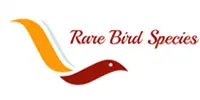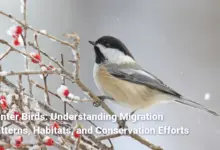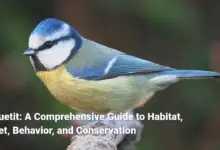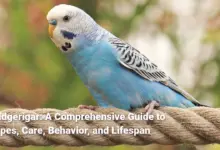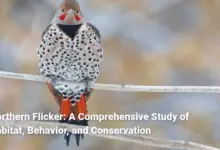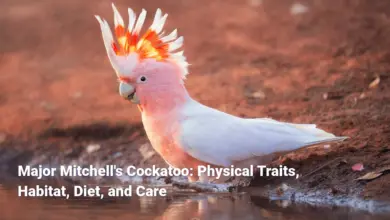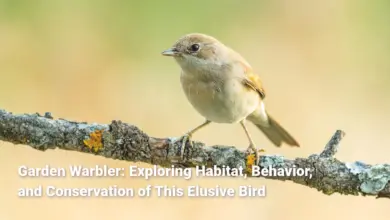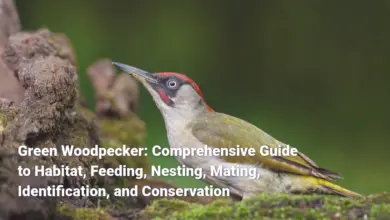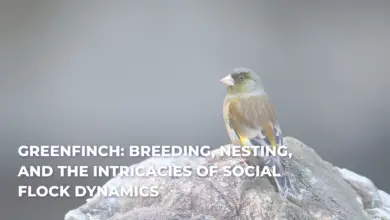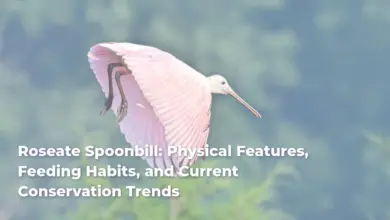Weka Bird: A Comprehensive Guide to Its Biology, Behavior
From Forest Floors to Māori Legends: The Fascinating Story of the Weka Bird
Weka Bird
The weka (scientific name: Gallirallus australis) is a fascinating and unique flightless bird endemic to New Zealand. Known for its curiosity and boldness, the weka has captivated the hearts of locals and tourists alike. Often described as a bird with the spirit of a trickster, the weka embodies the wild and diverse beauty found in New Zealand’s landscapes. Its distinctive appearance, playful behavior, and ecological significance make it a symbol of the nation’s natural heritage. While weka have adapted well to various habitats, they do face challenges in the form of habitat loss and introduced predators. Throughout this article, we will delve into the classification and taxonomy, physical characteristics, habitat and distribution, diet and behavior, reproduction and lifespan, and the unique cultural significance of the weka in order to provide a comprehensive understanding of this remarkable bird.
Classification and Taxonomy of the Weka Bird
The classification and taxonomy of the weka illustrate its unique biological identity within the diverse avifauna of New Zealand. Understanding its standing in the animal kingdom helps highlight its significance in conservation efforts. Like a piece of an intricate puzzle in the broader tapestry of life, the weka’s classification places it neatly within a series of biological categories, which trace back to fundamental taxonomic divisions.
The weka belongs to the following classification hierarchy:
- Domain: Eukaryota
- Kingdom: Animalia
- Phylum: Chordata
- Class: Aves
- Order: Gruiformes
- Family: Rallidae
- Genus: Gallirallus
- Species: Gallirallus australis
Serving as the only extant member of the genus Gallirallus, the weka stands out with its distinct evolutionary lineage. Similar to a cultural artifact handed down through generations, its genetic heritage reflects the rich biodiversity of New Zealand’s ecosystems. Despite facing numerous challenges, the weka continues to exist as a testament to the resilience of endemic species.
The weka is further differentiated into four recognized subspecies, with the strongest genetic evidence supporting two main subspecies based on geographical distribution North Island and South Island weka. These groups demonstrate variations in physical characteristics and habitat preferences, akin to the different dialects found in cultural groups across regions.
The classification of the weka encapsulates not only its biological attributes but also emphasizes the importance of ongoing conservation measures. As habits change and new threats arise, it becomes increasingly vital to understand the weka’s taxonomy to tailor effective ecological strategies that ensure its continued survival.
Scientific Classification of Weka Bird
The scientific classification of the weka underscores its distinct biological lineage and evolutionary history. This information serves as a foundation for understanding its ecological relationships and conservation needs. At its core, the weka is defined as follows:
- Domain: Eukaryota (organisms with complex cells)
- Kingdom: Animalia (multicellular organisms that consume organic material)
- Phylum: Chordata (animals with a notochord)
- Class: Aves (birds)
- Order: Gruiformes (a diverse order that includes rails and cranes)
- Family: Rallidae (the rail family, which includes many ground-dwelling birds)
- Genus: Gallirallus (the genus encompassing various rail species)
- Species: Gallirallus australis (the specific name for the weka, first described by Sparrman in 1786)
As the only surviving species within its genus, the weka’s evolutionary journey is a blend of survival and adaptation. It is comparable to a solo artist who, while emerging in the competitive world of music, captures the essence of a rich cultural legacy. This bird’s current classification illustrates how it has diverged from its ancestors to adapt to the unique environmental pressures and opportunities found in New Zealand.
Scientific studies have identified two primary subspecies based on genetic evidence and morphological characteristics:
- Northern Weka (Gallirallus australis greyi): Found primarily along the eastern coast of the North Island, the northern weka has faced population declines. By the 1980s, its numbers dwindled to alarming levels, prompting conservation efforts to encourage recovery.
- Southern Weka (Gallirallus australis australis): This subspecies mainly occupies the northern and western regions of the South Island and boasts a presence in the Marlborough Sounds and parts of Fiordland.
Two other subspecies, the Buff Weka (Gallirallus australis hectori) and Stewart Island Weka (Gallirallus australis scotti), are also notable but occupy niche habitats or have experienced population constraints. The diversity within weka subspecies illustrates the adaptability of the species across different ecological niches in New Zealand, reflecting their evolutionary responses to varying environmental conditions.
The scientific classification of the weka serves not just as a biological catalog but as a reminder of the complexities of nature. As researchers continue to study this majestic bird, the importance of maintaining its habitat and safeguarding its future cannot be overstated.
Subspecies of Weka Bird
The weka exhibits remarkable variations across its four officially recognized subspecies, each distinct in geographical distribution, size, and plumage. By understanding these subspecies, we can gain insights into the adaptations and ecological roles of the weka in New Zealand’s diverse ecosystems.
- Northern Weka (Gallirallus australis greyi): Primarily found on the eastern coast of the North Island, this subspecies has experienced significant population declines and local extinctions since the early 1900s, with remnant populations reported to be around 4,000 individuals by the early 1980s. The northern weka is characterized by its somewhat smaller stature and variation in plumage color, making it distinct from its southern counterpart.
- Southern Weka (Gallirallus australis australis): In contrast to its northern cousin, the southern weka thrives across the northern and western regions of the South Island. This subspecies is distinctly marked by dark red-brown and black streaking on its breast and exhibits two color phases, particularly prominent in its more southern range. The southern weka remains more abundant, showcasing an ecological resilience that allows for a stable population.
- Buff Weka (Gallirallus australis hectori): Once common in the eastern South Island, this subspecies is now largely confined to Chatham Island and Pitt Island. First introduced to these islands in the early 1900s, the Buff Weka displays a lighter appearance compared to its northern and southern relatives. Efforts to reintroduce the Buff Weka into Canterbury have faced challenges, highlighting the complexities of successful species recovery.
- Stewart Island Weka (Gallirallus australis scotti): The smallest of the subspecies, the Stewart Island weka is native to Stewart Island and surrounding areas. Characteristically, it presents two color phases, including a chestnut form and a distinctive black phase. The Stewart Island weka faces more limited geographic range constraints and has become increasingly vulnerable to extinction due to habitat pressures and predation.
The unique characteristics of each subspecies create a broader narrative about the resilience and adaptability of the weka species in the face of environmental changes. Like musical compositions that can vary in nuances yet still convey a shared theme, each weka subspecies tells a story of evolution intertwined with its distinct habitat.
Understanding these subspecies not only enriches our knowledge of weka biology but also emphasizes the crucial need for tailored conservation strategies. Protecting unique habitats while addressing the challenges posed by invasive species and environmental changes remains vital for the survival of this iconic New Zealand bird.
Endemic Nature of Weka Bird
The weka bird is a testament to the concept of endemicity, found nowhere else but in the rugged landscapes of New Zealand. This flightless bird represents an evolutionary journey shaped by isolation and adaptation, weaving itself into the fabric of the local ecosystems. Like a gem that can only be found in a specific location, the weka offers unique insights into the biodiversity of its home.
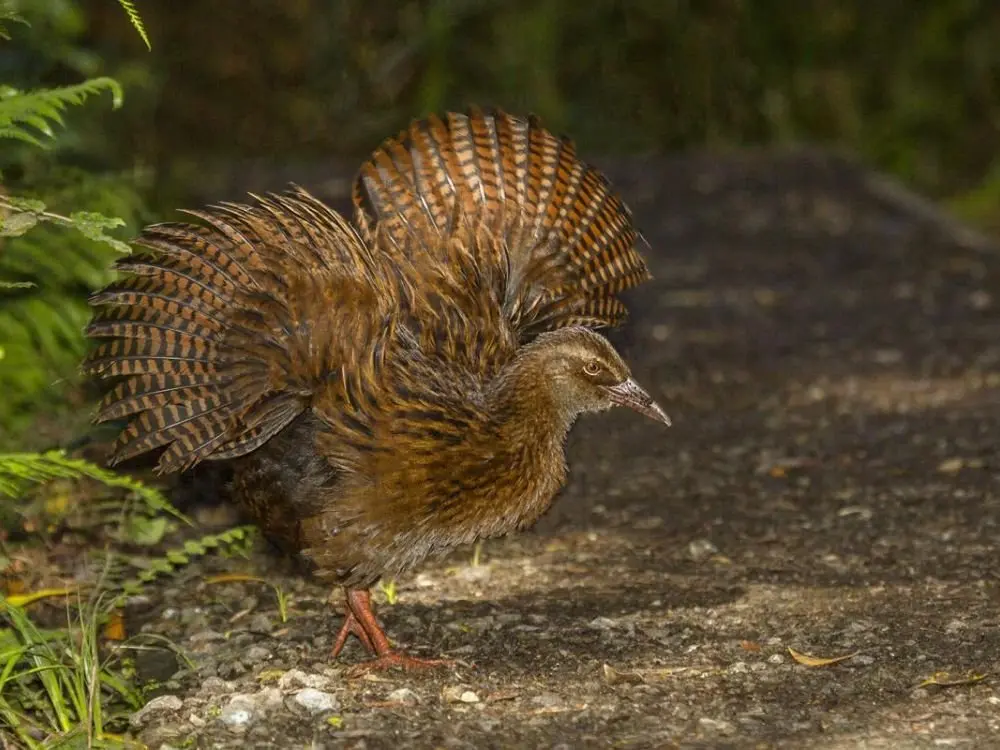
Being endemic to New Zealand means that the weka has developed alongside other native species, experiencing significant evolutionary changes in isolation from the rest of the world. Historically, the absence of mammalian predators allowed the weka to thrive as a ground-dwelling bird, scattering across various habitats, including forests, grasslands, wetlands, and even semi-urban areas. This adaptability is comparable to that of a street artist capable of transforming an ordinary alley into a vibrant mural, showcasing creativity in utilizing available resources.
Despite its wide array of favored habitats, the weka’s endemic nature has also made it susceptible to threats. Habitat modification from urban developments, agriculture, and introduced predators like cats and stoats has led to population declines, particularly in the more vulnerable subspecies. Their adaptability, while beneficial, is challenged by the increasing pressures of a rapidly changing environment.
Yet, amid these challenges, the weka remains relatively abundant on many offshore islands. These isolated environments provide refuge from the threats faced on the mainland, akin to a hidden sanctuary where communities can thrive unbothered. Island ecosystems have enabled weka populations to recover significantly, serving as critical habitats where conservation efforts can take root.
Conservationists are increasingly aware of the need to foster these vital ecosystems and take bold steps to protect the endemic species that reside within them. The weka’s tale is intricately interwoven with New Zealand’s identity; it bears a responsibility of stewardship that extends beyond local communities to ensure the survival of its relatives.
As we celebrate the uniqueness of the weka, it reminds us that the privilege of witnessing such extraordinary diversity comes with the duty to safeguard these living treasures. To preserve the weka is to embrace and ensure the continuity of New Zealand’s cultural and ecological integrity.
Physical Characteristics of the Weka Bird
The weka exhibits a range of physical characteristics that contribute to its distinctive identity among avian species. With a robust build and unique features, the weka not only promises visual delight but also reflects its impressive adaptability to the varied environments of New Zealand.
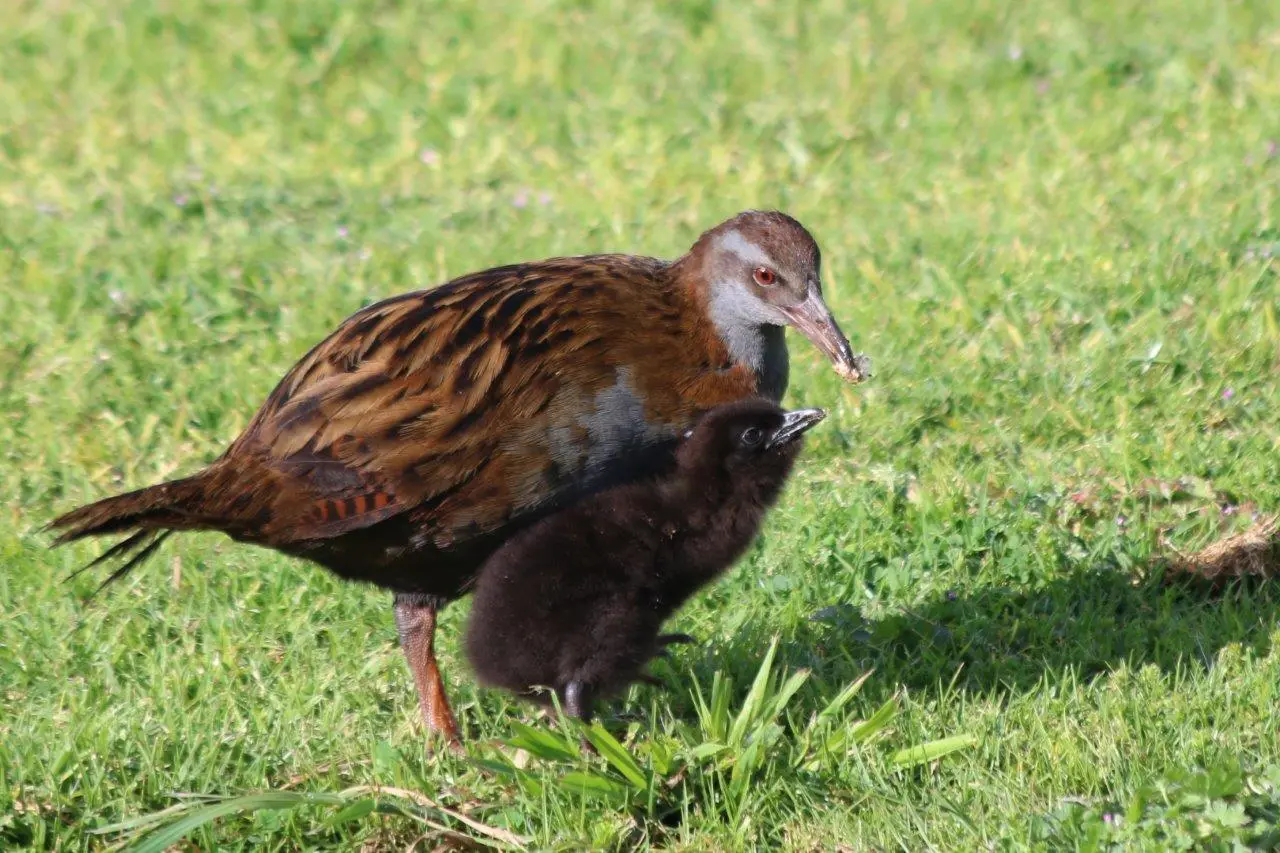
Size and Weight of Weka Bird
The size and weight of the weka make it relatively large among its fellow avian family members. Weka can measure approximately 46 to 60 centimeters (18 to 24 inches) in length. Males tend to be larger, reaching lengths of 50 to 60 cm (19.7 to 23.6 inches), while females are slightly smaller, ranging from 46 to 50 cm (18 to 19.7 inches).
In terms of weight, there is a notable difference between the sexes. Males typically weigh between 532 to 1,605 grams (1.173 to 3.538 pounds), while females range from 350 to 1,035 grams (0.772 to 2.283 pounds). On average, males hover around 1,000 grams (2.2 pounds), while females weigh about 700 grams (24.7 ounces).
| Characteristic | Males | Females |
|---|---|---|
| Length | 50 – 60 cm (19.7 – 23.6 inches) | 46 – 50 cm (18 – 19.7 inches) |
| Weight | 532 – 1,605 g (1.173 – 3.538 lbs) | 350 – 1,035 g (0.772 – 2.283 lbs) |
The robust physical structure of the weka complements its lifestyle, facilitating quick movements across diverse terrains. This size, while not suitable for flight, has equipped the species with the agility required for foraging and navigating its environment.
Plumage and Coloration
The weka’s plumage and coloration add another layer of intrigue to its physical appearance, serving both aesthetic and ecological purposes. With a predominantly rich brown body, the weka is effectively camouflaged against the forested and grassy backgrounds it inhabits. The varied shades of brown create a mosaic of patterns, similar to how nature itself adorned its beings for survival.
The plumage of weka varies significantly between its four subspecies, showcasing a rich palette of colors. The predominant dark brown often suffused with mottling of black and gray allows the weka to blend harmoniously with its environment. This coloration, much like an artist’s brushstrokes, varies according to the unique setting, demonstrating nature’s creativity and adaptation strategies.
Weka possess a stout and distinctive reddish-brown bill, measuring approximately 5 cm (2 inches) long, which is a critical adaptation for their foraging habits. This beak is adept at probing the ground for food, breaking open seeds, and even shattering shells to access hidden nutrients. With strong legs and a pointed tail that often flicks, the weka exhibits behaviors that reflect their alert nature.
The combination of these physical characteristics does not only serve the weka’s ecological needs but enhances its position within New Zealand’s rich biodiversity. These features are enduring reminders that every detail, from color to size, plays a vital part in the intricate connections that sustain life in the natural world.
Adaptations for Flightlessness
The flightless state of the weka elucidates a fascinating chapter in its evolutionary journey, reflecting how species can adapt over time to fit their environments. Like an artist transforming a canvas to express a vision, the weka has evolved its physical traits for survival without the ability to fly.
The primary adaptation for flightlessness is the weka’s reduced wings. These wings, measuring about 20 to 24 inches (50 to 60 cm) in span, are insufficient for sustained flight. Instead, they serve the bird’s balance and assist in limited flapping which can be beneficial during steep inclines or rapid movements through dense underbrush. The evolution from flight to a ground-dwelling lifestyle symbolizes a shift in priorities a decision to invest in foraging and survival strategies suited to a terrestrial existence.
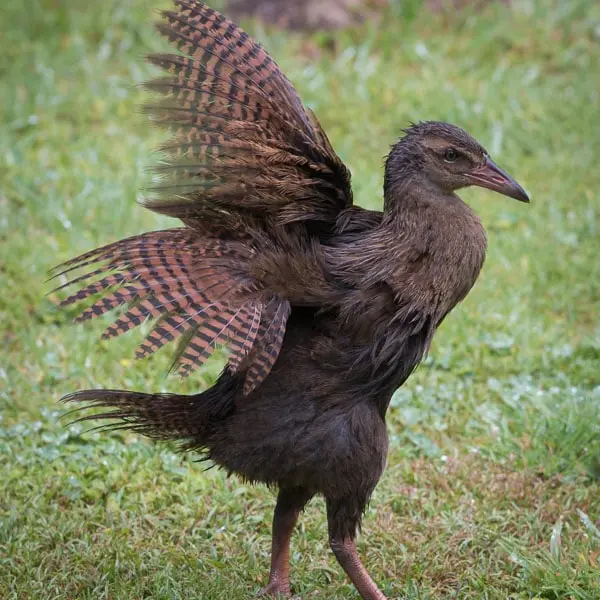
With sturdy legs capable of swift movements, the weka has transformed its body for effective navigation through thick vegetation and varied terrains. This adaptation allows the weka to hunt for food, evade danger, and thrive in environments that others may find challenging. Strong limbs are equally critical for adapting to urban settings, where foraging opportunities may arise from human activity.
Living in the absence of significant mammalian predators for much of its history, the weka has developed a ground-focused lifestyle, demonstrating that life’s limitations can often lead to innovative solutions. The absence of flight conveys vulnerability in some respects, yet the weka compensates for this by becoming adept at using its environment creatively.
Flightlessness ultimately reflects a series of evolutionary decisions fulfilling fundamental survival roles, thereby underscoring the complexity of life where adaptability reigns. The weka’s story is a reminder that adaptability is not merely about overcoming challenges; it is also about embracing and thriving amidst them.
Habitat and Distribution of the Weka Bird
The habitat and distribution of the weka are critical to understanding its ecological significance and adaptive behavior across New Zealand’s diverse environments. Adaptable by nature, the weka’s presence in various ecosystems highlights its unique resilience while also pointing to the challenges that come with habitat modification.
Natural Habitats of Weka Bird
The weka thrives in a variety of environments, including forests, sub-alpine grasslands, scrub, sand dunes, rocky shores, coastal wetlands, and even modified semi-urban areas. Its adaptability is akin to a versatile actor taking on multiple roles, demonstrating range and resilience in different stages of life. Weka are particularly associated with habitats providing substantial cover and foraging opportunities, where the dense foliage offers protection against predators.
- Forests: Weaks inhabit indigenous rainforests where they forage for insects, fruits, and other vegetation.
- Grasslands: The open spaces allow for optimal movement while foraging for seeds, insects, and plant matter.
- Scrubland: Dense scrub provides ample cover, essential for nesting and protection from predators.
- Wetlands: These environments support diverse food sources, helping maintain a stable diet for the weka.
Conservationists emphasize the need to preserve these habitats, recognizing that the weka is not just a symbol of New Zealand but an integral component of its ecological network. The presence of healthy weka populations signifies stable and thriving environments where biodiversity can flourish.
Geographic Range in New Zealand
Geographically, the weka’s distribution varies significantly based on its subspecies. The four recognized subspecies include the Northern (G. a. greyi), Southern (G. a. australis), Buff (G. a. hectori), and Stewart Island (G. a. scotti) weka. Each occupies specific locations across New Zealand’s islands, contributing to the overall diversity of the species.
- Northern Weka (G. a. greyi): Found primarily along the eastern North Island, this subspecies has faced population declines and is now found mainly in isolated areas.
- Southern Weka (G. a. australis): The most commonly observed subspecies, it inhabits regions throughout the Marlborough Sounds, Nelson, and the upper West Coast, displaying a stable population.
- Buff Weka (G. a. hectori): Present on Chatham and Pitt Islands, the Buff Weka has been successfully reintroduced after dwindling numbers in the eastern South Island.
- Stewart Island Weka (G. a. scotti): Limited to Stewart Island and some adjacent islands, this subspecies experiences habitat challenges leading to its designation as nationally vulnerable.
The distribution of weka is a mirror reflecting the richness of New Zealand’s geological and ecological tapestry. The availability of unique habitats signifies the vital role ecosystems play in supporting diverse species.
Presence on Offshore Islands
Islands play a multifaceted role in the ecology of the weka, offering refuge from the numerous threats encountered on the mainland. These offshore habitats often provide a safe haven where weka populations can thrive with reduced predation risks, enabling them to regroup and recover from historical population pressures.
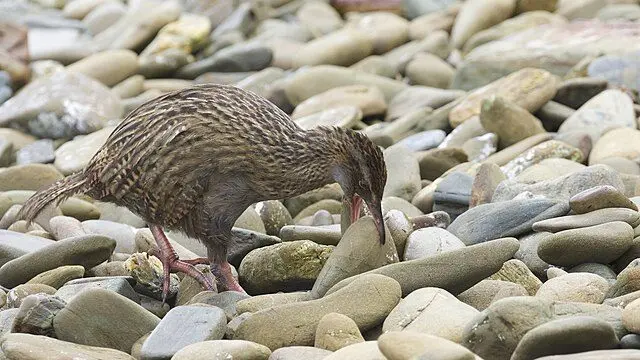
Such islands include Chatham Island, where populations of the Buff Weka have been successfully established post-introduction, enhancing their likelihood of survival. Stewart Island also offers suitable conditions for the Stewart Island weka, allowing it to persist even in localities where mainland populations may have been significantly reduced.
Presence on these islands highlights the significance of conservation efforts aimed at habitat restoration and management. A focus on safeguarding these environments is crucial for weka’s continued survival, as these island ecosystems serve as sanctuaries with a greater potential for recovery than mainland populations afflicted by numerous anthropogenic pressures.
In essence, the interaction of the weka within its various habitats, its geographical distribution, and the protection afforded by offshore islands intertwine to create a narrative of resilience and adaptability. Preserving their ecosystems is an ongoing responsibility that lies at the heart of conservation efforts in New Zealand.
Diet and Feeding Habits of the Weka Bird
The weka is an omnivorous bird with diverse and opportunistic feeding habits that reflect its adaptability to various environments. Known for its curiosity and resourcefulness, the weka’s diet primarily consists of both plant and animal materials, contributing to its role as a forager within its ecosystem.
Omnivorous Diet of Weka Bird
The weka’s diet is a harmonious blend of animal and plant matter, with estimates suggesting that about 30% of its diet comprises animal inputs, while 70% consists of vegetative components. This versatility is a hallmark of the weka’s adaptability, as it navigates through different habitats in search of food.
- Animal Foods: We kas actively search for invertebrates such as:
- Earthworms
- Larvae
- Beetles
- Wētā (a type of large insect)
- Small amphibians or reptiles
- Plant Foods: The vegetal part of their diet includes:
- Seeds
- Scrubs and leaves
- Berries
This diverse diet allows the weka to flourish in various habitats, where it acts as both a pest controller and a seed disperser, playing an essential ecological role in maintaining the balance of its environment. Much like nature’s clean-up crew, the weka helps manage insects’ populations while supporting plant communities.
Foraging Behavior
The weka’s foraging behavior is characterized by its inquisitiveness and adaptability in finding food. By utilizing its strong, curved beak, the weka probes and scratches the ground for hidden treasures beneath leaf litter or soil.
- Probing: The weka uses its bill to dig through moss and debris, searching for insects and small invertebrates. This behavior is akin to a detective uncovering clues in a mystery, showcasing its resourcefulness.
- Surface Scratching: The bird tends to scratch surfaces to reveal hidden seeds or plant materials, showcasing its skillful combination of movement and detection.
- Curiosity: Weka often exhibit a playful curiosity, exploring human settlements for food scraps, displaying their fearless demeanor as they flit around potential sources of nourishment.
Weka are primarily diurnal, meaning they are most active during the daytime, though they may also forage occasionally at night. This adaptive behavior enhances their likelihood of encountering various food options.
In essence, the weka’s foraging strategy is a blend of playful exploration and pragmatic searching, illuminating its role within the broader ecological narrative of New Zealand.
Food Sources and Preferences
The dietary preferences of the weka reflect its adaptability and resourcefulness in foraging. Its omnivorous nature allows it to thrive in various environments, efficiently using available food resources depending on what the surrounding ecosystem provides.
- Invertebrates: We kas primarily hunt for worms, larvae, and slugs. Earthworms serve as particularly nutritious sources, while beetles represent a readily accessible food option.
- Plant Material: Fruits and seeds form an integral component of their diet, with berries and nuts being particularly favored during the appropriate seasons. This relationship helps support plant regeneration through seed dispersal.
- Scavenging: Weka are known for rummaging through human waste and food scraps. This scavenging behavior highlights their opportunistic feeding habit, illustrating how weka can adapt their diet to include readily available resources.
The capacity for the weka to adjust its feeding preferences based on seasonal availability showcases its ecological adaptability, allowing it to maintain resilience in fluctuating environments.
Behavior and Social Structure of the Weka Bird
The behavioral intricacies and social structure of the weka offer insights into how these birds interact with each other and their environment. With strong territorial tendencies and social bonds, the weka showcases a complex relationship with its species and surroundings.
Territoriality and Nesting Habits
Weka exhibit notable territorial behavior, which serves as a cornerstone of their social organization. Adult pairs, typically consisting of a male and female, establish and defend territories that ensure exclusive access to vital resources such as food, nesting sites, and protection.
- Territory Size: The territory range varies from a minimum of 2.6 hectares to over 15.8 hectares, with larger territories typically found in areas of higher resource availability. Boundaries are often communicated through vocalizations and physical displays, reinforcing their claim.
- Nesting: Having monogamous pair bonds, weka construct their nests at ground level, using grasses and dense vegetation to create a secure environment for their young. The choice of nesting location often reflects resource availability and protection from predation, with nests being artfully hidden beneath heavy brush much like secret gardens flourishing unseen by the outside world.
- Reproductive Behavior: Successful pairs can breed multiple times within a year, producing between three to four eggs per clutch. The collaborative efforts of both parents in care during the incubation cycle increase survival chances for the chicks.
Territorial disputes may arise over boundaries, but such conflicts typically conclude with minimal aggression. The social structure of weka is dynamic, with younger weka having opportunities to ascend to territorial positions as they reach maturity.
Overall, this complexity in social structure combined with the cooperative nature of nesting showcases the adaptability and resilience of the weka as a species thriving within New Zealand’s unique environments.
Communication and Vocalizations
The methods of communication and vocalizations expressed by weka play key roles in their social structure and interactions with one another. Through a diverse range of calls, the weka navigates its environment while establishing relationships with peers.
- Vocalizations: The weka produces distinctive calls that convey crucial information, aiding in mate attraction, territory defense, and signaling alarm. Such vocalizations can vary in tone, pitch, and complexity, suggesting a nuanced communication system reminiscent of a language.
- Social Interactions: Through coordinated behaviors during foraging and protection against potential threats, weka rely significantly on vocal signals. These calls help them communicate their needs and intentions effectively, fostering strong social bonds among group members.
- Mating Rituals: Elaborate courtship rituals involving vocal displays are vital in attracting mates. Males may engage in vocal contests to demonstrate fitness, showcasing their vocal repertoire as they compete while charming potential partners.
Overall, the communication behaviors of the weka reflect important aspects of their social interactions and reproductive strategies, uniting them as a cohesive group that thrives in New Zealand’s ecosystems.
Social Interactions and Mating Practices
The social dynamics and mating practices of the weka highlight the intricacies of its behavior and interactions within communities. Their multifaceted social structure enriches their relationships and influences reproductive success.
- Monogamous Bonds: Weka typically forge long-lasting monogamous partnerships, enhancing stability and security within their nests. These bonds are reinforced by interdependent behaviors during nesting, where pairs take turns incubating eggs and raising their chicks.
- Courtship Displays: During the breeding season, males engage in elaborate displays and vocalizations to attract females. These displays serve not only to entice potential mates but also to establish dominance within territorial encounters.
- Parenting: Both parents assume active roles in nurturing their chicks following hatching, providing food and protection until the young are independent. This parental investment is crucial, as chicks usually become self-sufficient within six to ten weeks.
- Social Structures: Weka may exhibit behaviors that reflect social hierarchies, with older, more experienced individuals often demonstrating leadership roles within cohesive family units. The dynamics of juvenile recruitment further contribute to the ongoing sustainability of social structures over time.
The cooperative breeding, intricate courtship rituals, and commitment to nurturing young reveal the depth of social interactions present in weka populations. These behaviors affirm their adaptability and the importance of social bonds in thriving within diverse ecological settings.
Reproduction and Lifespan of the Weka Bird
Reproductive behaviors and lifespan characteristics of the weka are critical components of its biology, influencing population dynamics and resilience in the face of environmental challenges. These factors contribute significantly to the survival of this unique bird species.
Breeding Cycle and Nesting
The breeding cycle of the weka showcases its commitment to reproductive success and nurturing, highlighting the vital relationship between the birds and their environment.
- Breeding Season: Weka typically breed from August to January, a timeframe largely influenced by the availability of food resources. Favorable conditions can lead to multiple breeding attempts within a year, wherein pairs may have as many as four broods.
- Nesting: Weka are known for constructing ground nests, forming them into bowl-like structures using grass and foliage. These nests are typically hidden within dense vegetation to shield the eggs and chicks from predators.
- Egg Laying: The female lays between three and four eggs, which tend to have a creamy or pinkish appearance adorned with brown and mauve markings. The coloration serves to contribute to their camouflage, further enhancing the chances of survival for the developing chicks.
- Parental Care: Following the incubation period, both parents are actively involved in caring for the young. Continuous parental support plays a critical role in ensuring the fledglings learn essential survival skills, enabling them to thrive independently.
Incubation and Hatching
The incubation and hatching process for the weka begets an exciting chapter in their reproductive journey. This phase reinforces the importance of parental collaboration and nurturing.
- Incubation Duration: The incubation period lasts approximately one month, during which both parents will alternate in incubating the eggs. This cooperative approach minimizes the risk of leaving the nest vulnerable and maximizes protective coverage.
- Hatching Behavior: Once the incubation time elapses, the eggs hatch, revealing precocial chicks that are relatively well-developed at birth. Unlike some other bird species, weka chicks are capable of moving around shortly after hatching, actively seeking their parents for nourishment and protection.
- Development of Chicks: During the crucial initial weeks of life, the chicks rely heavily on their parents for both food and protection. Each parent plays a vital role in assessing predators and some foraging, thereby teaching the youngsters vital survival skills before they reach independence.
Overall, the critical stages of breeding, incubation, and hatching mirror the weka’s adaptive nature, underscoring its reliance on cooperative parental investment and the importance of nurturing in a changing environment.
Growth and Development of Chicks
The growth and development of weka chicks highlight the critical factors influencing their survival and transition to independence within their native ecosystems.
- Early Dependency: Upon hatching, weka chicks depend entirely on their parents for food, care, and protection. They learn quickly from their parents, emulating their foraging habits while gaining practical skills for survival.
- Nurturing Period: During the first six to ten weeks, both parents impart lessons to their young teaching them how to scavenge for food and evade potential threats. This nurturing period cultivates a strong bond between the parents and the chicks, ensuring a higher likelihood of survival.
- Independence: By the end of this nurturing period, the chicks reach a level of maturity that allows them to fend for themselves. Independence marks a critical threshold where their social structures begin to shift, with young weka becoming part of broader communities as they integrate into local populations.
- Lifespan: The average lifespan of weka typically spans around 14 years under optimal conditions, offering sufficient time for both individuals and communities to adapt and thrive within their ecosystems.
The growth and development of weka chicks encapsulate a remarkable journey filled with learning, nurturing, and adaptability. Each step further emphasizes the importance of parental roles while illuminating the intricate dance between life stages and environmental challenges.
Interesting Facts and Cultural Significance of the Weka Bird
The weka encapsulates not only ecological significance but also rich cultural connections within the landscape of New Zealand. Herein lies a collection of interesting facts and insights that illuminate this unique bird’s role beyond mere biological existence.
Unique Behaviors of Weka Bird
- Curiosity: Known for their inquisitive nature, weka have garnered a reputation as “cunning thieves” due to their tendency to investigate human camps. They often sneak into bags or picnic areas, showcasing playful antics while searching for food.
- Vocalizations: Weka possess a wide range of calls that are utilized for various purposes, including signaling alarm, establishing territory, and attracting mates. This vocal richness adds a layer of complexity to their social interactions.
- Navigation: We kas are renowned for their remarkable homing ability, often finding their way back home even after being relocated. Historical accounts of banded wekas returning across considerable distances further attest to their impressive navigational skills.
- Ecological Role: As omnivores, weka actively contribute to their ecosystems by controlling insect populations and aiding in seed dispersal. Their roles underscore the interconnectedness of various species within their habitats.
Weka Bird in Māori Culture
The cultural significance of the weka is deeply intertwined with Māori heritage, highlighting its role in storytelling, tradition, and identity.
- Māori Hen: The weka, referred to as “Māori hen,” has long been celebrated for its character and tenacity. It appears in traditional stories, symbolizing themes of courage, resilience, and adaptability.
- Mythological Figures: In Māori mythology, special tales underline the weka as a protector and symbol of strength. These stories often describe encounters where the weka aids important figures or serves as a guide, illuminating its significance within cultural narratives.
- Resource Utilization: Historically, the Māori utilized weka for sustenance, and their feathers were incorporated into ceremonial clothing and adornments, exemplifying respect for natural resources and sustainable practices.
Weka’s Impact on Local Tourism and Awareness
The weka has increasingly emerged as a cultural icon and tourist attraction in New Zealand, promoting awareness and appreciation of local biodiversity.
- Tourist Attraction: The charming antics of the weka draw local and international tourists alike, enhancing the experience of exploring New Zealand’s unique wildlife. Their playfulness invites cameras and social media posts, allowing visitors to engage with local culture.
- Educational Opportunities: Guided tours and wildlife experiences often include insights about the weka, promoting understanding of its ecological importance and emphasizing the need for conservation.
- Cultural Experiences: Māori tourism operators integrate the weka into cultural narratives, allowing tourists to learn about its significance to the Māori people and environmental stewardship.
- Economic Contributions: The attraction of the weka supports local economies, offering opportunities for sustainable tourism that highlights wildlife preservation while benefiting communities.
Overall, the special status of the weka embodies a connection to environmental awareness and cultural heritage. By understanding its ecological roles and cultural significance, New Zealanders and visitors alike can appreciate the ongoing efforts necessary to protect this fascinating bird and its legacy for generations to come.
In summary, the weka represents a captivating species laden with ecological and cultural narratives. The intersection of its unique traits, challenges, and significance within New Zealand’s biodiversity serves as an essential reminder of the intricate connections we share with the natural world. As we celebrate the weka, we must also champion its preservation, recognizing that the survival of this flightless bird is intrinsically linked to the health of the ecosystems it inhabits. The weka, with its robust character and playful nature, will continue to inspire awe as it dances through the forests and fields of its homeland, reminding us of the importance of conservation and respect for all living beings.
